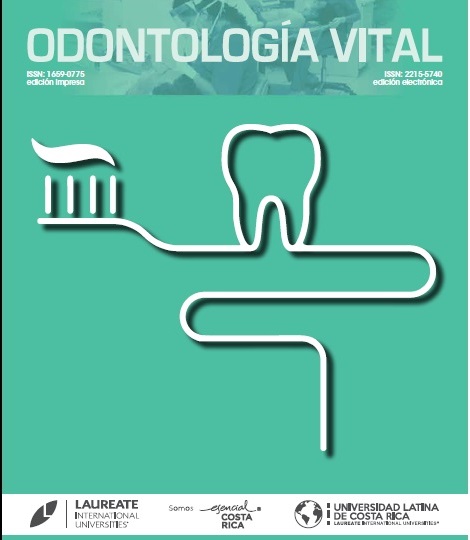Development time and the deformity degree of the thermoformed base plate compared to the acrylic base plate of self-polymerization
DOI:
https://doi.org/10.59334/ROV.v2i31.321Keywords:
Self-curing acrylic base plate, thermoformed base plate, prosthetic dentures, acrylic resins, polymethyl methacrylateAbstract
Introduction: Currently there are different types of materials for the preparation of base plates, as a procedure for the preparation of dental prostheses. The option of the thermoforming sheet, which is currently of little use, as well as, of self-curing acrylic, a material of daily use in consultation. Objective: To compare the techniques for making base plates, to determine which of the two provide qualities such as shorter processing time and less deformity.
Materials and methods: 20 models of gypsum totally edentulous were selected for convenience, to which processing time is recorded and the same laboratory tests are applied.
Results: The thermoformed base plates have an average time of 7 minutes, while the self polymerized acrylic base plates have an average time of 29 minutes, based on the laboratory analysis the least deformation occurs in the acrylic base plate of autopolimerization.
Conclusion: The time of preparation of the thermoformablebase plate is less, while the deformation is greater compared to the base plate of self-polymerizatíon, the latter in turn, has a longer processing time than the thermoformable base plate.
Downloads
References
ASTM. Designación D 638-14: Standard test method for tensile properties of plastics.
ASTM. Designación D 6988-13: Standard guide for determination of thickness of plastic film test specimens.
ASTM. Designación D792-13: Standard test method for density and specific gravity (relative density) of plastics by displacement.
ASTM. Designación D 882-12: Standard test method for tensile properties of thin plastic sheeting.
ASTM. Designación E 1131-03: Standard test method for compositional analysis by thermogravimetry.
ASTM. Designación E 3418-99: Standard test method for transition temperaturas of polymers by differential scanning calorimetry.
Guzmán, H. (2006). Biomateriales odontológicos de uso clínico. Bogotá, Colombia: ECOE Ediciones. Hatakeyama, T., F.X. Quinn. (1999). Thermal analysis. Fundamentals and applications to polymer science. England: John Wiley & Sons.
McCabe, J. (1988). Materiales de aplicación dental. Barcelona, España: Salvat Editores, S. A.
Owall, B., Kayser, A., y Carlsson, G. (1997). Odontología protésica principios y estrategias terapéuticas. Madrid, España: Diorki, Servicios integrales de edición.
Rahn, A. O., Ivanhoe, J. R., y Plummer, K. D. (2011). Prótesis dental completa. Buenos Aires, Argentina: Editorial Médica Panamericana.
Seymour, R, C. Carraher. (1995). Introducción a la química de los polímeros. España: Editorial Reverté, S.A. Valverde, S. (2018). Análisis del tiempo de elaboración y el grado de deformidad que presenta la placa base termoformada en comparación con la placa base de acrílico de autopolimerización (polvo/líquido), en modelos de yeso totalmente edéntulos (Tesis de grado). Universidad Latina, San José.
Downloads
Published
Issue
Section
License
Copyright (c) 2019 Stefanny Valverde Fajardo, Maikol Ramos Madrigal

This work is licensed under a Creative Commons Attribution 4.0 International License.
Authors who publish with Odontología Vital agree to the following terms:
- Authors retain the copyright and grant Universidad Latina de Costa Rica the right of first publication, with the work simultaneously licensed under a Creative Commons Attribution 4.0 International license (CC BY 4.0) that allows others to share the work with an acknowledgement of the work's authorship and initial publication in this journal.
- Authors are able to enter into separate, additional contractual arrangements for the non-exclusive distribution of the Odontología Vital's published version of the work (e.g., post it to an institutional repository or publish it in a book), with an acknowledgement of its initial publication.
- Authors are permitted and encouraged to post their work online (e.g., in institutional repositories or on their website) prior to and during the submission process, as it can lead to productive exchanges, as well as earlier and greater citation of published work.







